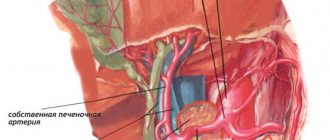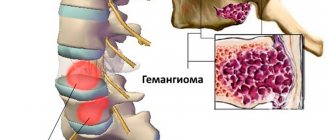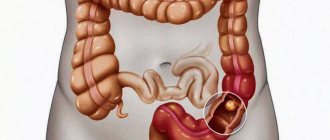“Abdominal cancer” - strictly speaking, there is no such term in oncology, and it does not designate any specific malignant tumor. Most often, when this phrase is uttered, they mean primary malignant neoplasms or metastases in the peritoneum, cancer of organs that are located in the abdominal cavity.
- Abdominal cavity and peritoneum - what is it?
- Types of abdominal cancer
- Symptoms
- Complications
- Diagnosis of abdominal cancer
- Treatment
- Prognosis and prevention
Abdominal cavity and peritoneum - what is it?
The abdominal cavity is the space in the abdomen filled with intestines and other internal organs. It is bounded above by the diaphragm, below by the pelvis, on the sides and in front by the abdominal muscles, and behind by the spine and lumbar muscles.
The inside of the abdominal cavity is lined with a thin film of connective tissue - the peritoneum. Its visceral layer covers the internal organs, the parietal layer covers the walls of the abdominal cavity. Between the layers of the peritoneum there is a closed slit-like space, and in it there is a minimal amount of fluid that acts as a lubricant and ensures the free sliding of organs. In some places, the peritoneum forms folds: mesenteries , on which organs are suspended, omentums .
Internal organs can be located in relation to the peritoneum in different ways:
- Intraperitoneal - covered with peritoneum on all sides.
- Mesoperitoneal - partially covered.
- Retroperitoneal (retroperitoneal) - covered on one side only.
Surgery for a tumor of the retroperitoneum
Depending on the location of the retroperitoneal tumor, removal can be performed using open surgery or through a laparoscopic approach. There are several types of incisions; access can be transperitoneal, extraperitoneal lumbar, abdominal-perineal, or perineal. Compared to open surgery, laparoscopy has great advantages.
- All actions are performed through several small incisions. Due to the absence of a large incision (as with an open approach), healing occurs much faster, hospitalization usually takes from two to five days.
- The ability to visualize when using video endoscopic equipment allows you to perform all manipulations as accurately as possible. The likelihood of damage to thin vascular structures, nerve fibers and other elements located in the operation area is practically absent.
- In the postoperative period, painful manifestations are either absent or minimal and short-lived, and can be easily relieved with analgesics.
- After 7-10 days, patients return to their normal lifestyle;
- After healing, only almost imperceptible puncture marks remain on the skin.
Types of abdominal cancer
Primary abdominal tumors are rare. They come in different types: mesothelial, epithelial, unspecified smooth muscle. A special type of malignant peritoneal tumor is pseudomyxoma. It develops from cells that produce large amounts of jelly-like fluid. Most often, such tumors spread to the peritoneum from the appendix.
Often, primary malignant tumors of the abdominal cavity have a structure and behave like ovarian cancer. They cause similar symptoms, and doctors use much the same treatments to treat them.
Risk factors
It is known that, in general, the likelihood of developing primary abdominal cancer is higher in women than in men.
Risks increase with age. There is a connection between the likelihood of developing the disease and changes in the BRCA1, BRCA2 genes. In different types of cancer in the later stages, tumor cells separate from the primary tumor, spread throughout the body and form new foci in various organs, including the abdominal cavity. This process is called metastasis. Most often, cancer of the colon and rectum (in 15% of cases), stomach (in 50% of cases), ovary (in 60% of cases), and pancreas metastasizes to the peritoneum. Sometimes metastases spread from organs that are located outside the abdominal cavity: breast, pleura (a film of connective tissue covering the lungs and lining the walls of the chest cavity), lung.
Causes of oncology
Usually, among all cancer patients, there are some similarities that could lead to this disease. In particular, the following are at risk:
- People who abuse alcohol. Often, people who drink are diagnosed with cancer of the liver, stomach or intestines, since these organs are the first to suffer after drinking alcohol.
- Abusing fatty foods. It was noticed that most cancer patients had an unbalanced diet rich in fatty acids. They have low consumption of plant fiber, fresh fruits and vegetables.
- People of retirement and pre-retirement age. This is the most common category of people among visitors to oncology clinics. With age, the body depletes its internal resources, which leads to a general weakening of all organs of the human body.
- People exposed to stress. Nervous fatigue also weakens the immune system, allowing cancer cells to actively spread within the body.
- People working with radioactive substances. It was noted that the greatest peak in the occurrence of cancer occurred after the explosion of the Chernobyl nuclear power plant. After a large dose of radioactive radiation, the cells of a living organism cease to function normally, mutating and thereby causing malignant tumors.
Abdominal oncology is a terrible disease that is very difficult to detect early. If you notice any changes in yourself, you need to call or write to us, and we, in turn, will organize a consultation with a specialist in order to identify a possible disease in time.
Symptoms
Often there are no symptoms for abdominal cancer for a long time, so it is often diagnosed in late stages. Manifestations of pathology are nonspecific, they can easily be mistaken for signs of other diseases:
- Discomfort, cramps, bloating.
- Increased gas formation in the intestines.
- Loose stools.
- Constipation.
- Nausea.
- Decreased appetite.
- Frequent urination.
- Dyspnea.
- Rapid weight gain or loss.
- Bleeding from the rectum, in women - from the vagina.
If peritoneal carcinomatosis occurs as a result of metastasis of a malignant tumor from another organ, the prognosis is greatly worsened. Antitumor therapy begins to work worse because many drugs do not penetrate the peritoneum well.
Book a consultation 24 hours a day
+7+7+78
Complications
The main complication of this disease is ascites. This term refers to a condition in which fluid accumulates in the abdomen. Normally, about 1.5 fluids are produced and absorbed between the layers of the peritoneum daily. With carcinomatosis, the outflow of lymph is disrupted, and the fluid is less absorbed. It begins to accumulate inside the abdomen.
As long as there is little fluid, the patient does not experience any symptoms. Then heaviness and dull pain in the lower abdomen begin to bother me. Breathing becomes difficult, shortness of breath occurs. Due to the fact that the fluid compresses the organs, the patient complains of belching, nausea, problems with stool and urination. The abdomen increases in size, and an umbilical hernia may occur. With severe ascites, heart failure and edema develop.
Diagnosis of abdominal cancer
The following diagnostic methods help identify a malignant tumor:
- Ultrasonography. It is often prescribed primarily as a simple, accessible, safe and at the same time informative diagnostic method.
- Computed tomography and magnetic resonance imaging help to assess the condition of the peritoneum and internal organs, identify pathological formations, and assess the extent of cancer spread.
- PET scanning is currently the gold standard for searching for distant metastases.
- Biopsy is the most accurate method for diagnosing malignant tumors. A doctor may obtain a sample of tumor tissue during diagnostic laparoscopy, a procedure in which a miniature video camera and special instruments are inserted into the abdomen through punctures in the abdominal wall. The sample is sent to the laboratory and undergoes histological, cytological examination, and molecular genetic analysis. This helps not only to diagnose cancer, but also to establish the nature of tumor cells and figure out which drugs are best to fight them.
- X-ray contrast studies help assess the condition of the digestive tract, identify tumor foci and other pathologies.
- Analysis for tumor marker CA-125 (carbohydrate antigen 125). The level of this substance increases in the blood with peritoneal and ovarian cancer. But this analysis is not accurate enough to diagnose these diseases. Typically, it is used to monitor the progression of cancer and the effectiveness of treatment.
- Women should be examined by a gynecologist.
Typically, oncologists make a diagnosis based on such signs as ascites, thickening of the peritoneum, the appearance of nodules on it, displacement, compression of intestinal loops, pathological changes in the liver and folds of the peritoneum - omentums.
Author's technique for removing a retroperitoneal tumor
The critical stages of the operation are isolation of the tumor, establishment of its connection with surrounding organs and vital structures, revision and mobilization of the tumor. I always give preference to the laparoscopic approach, which is less traumatic and effective.
A special feature of my laparoscopy technique is the method I developed for installing trocars, which allows me to place surgical instruments at an optimal manipulation angle. Excision of pathological formations in this complex area is thus quick and safe.
During surgery, I also use modern ultrasonic scissors and a device for dosed electrothermal tissue ligation “LigaSure” (USA), which eliminates the need to use surgical threads and clips. The absence of bleeding in the surgical area ensures the safety of the intervention and maximum precision when manipulating the smallest structures. In the case of a primary retroperitoneal tumor and the presence of damage to adjacent structures, radical surgery is performed as a single block. The removed tissues are sent for histological examination, which is important for further treatment and prognosis.
I have been performing laparoscopic interventions since 1997; I have performed more than 200 operations to remove retroperitoneal tumors using laparoscopic access. Any patient who contacts me can count on my knowledge and experience. Based on the examination results, I select treatment tactics in such a way as to achieve the most effective result.
Treatment
The choice of treatment tactics depends on the location, size, stage of the malignant tumor, and the number of nodes. The doctor must also take into account the general condition of the patient, his age, and the presence of concomitant diseases.
Often, when the peritoneum is affected, there are a lot of tumor foci, many of them are small, and it is impossible to completely remove them. Surgical treatment is aimed at removing as many lesions as possible and usually precedes chemotherapy. Usually the uterus, ovaries, parts of the intestines are removed - in a word, everything that is affected by a malignant tumor. If a malignancy causes intestinal obstruction or other complications, palliative surgical interventions are performed.
In order to destroy tumor cells in primary cancer in the abdominal cavity, chemotherapy is used, often the same as for ovarian cancer. Medicines are administered intravenously or into the abdominal cavity—this type of chemotherapy is called intraperitoneal (intraperitoneal) chemotherapy.
Since 2022, Euroonco doctors have been practicing an innovative method of treating peritoneal carcinomatosis - hyperthermic intraperitoneal chemotherapy (HIPEC). Its essence lies in the fact that the surgeon removes all sufficiently large tumor foci, and then rinses the abdominal cavity with a heated solution of the chemotherapy drug. This helps to destroy the maximum number of tumor cells and significantly prolong the patient’s life.
For ascites, our doctors perform laparocentesis (a puncture in the abdominal wall and removal of fluid), install peritoneal catheters for constant outflow, and perform surgical interventions that prevent further accumulation of ascitic fluid.
In later stages, palliative treatment is carried out, which helps reduce symptoms and prolong the patient’s life.
What does abdominal surgery do?
The Surgical Department of Abdominal Oncology performs the following:
- Treatment of malignant neoplasms of the colon and rectum. The principle of functional-sparing radical surgery has been developed and is widely used, which includes preserving urination, sexual function and performing operations without a stoma even with a low tumor location.
- Reconstructive plastic surgery in patients with a permanent stoma after obstructive resections of the colon. High-tech unique operations performed by the department’s surgeons make it possible to restore the natural passage of intestinal contents and significantly improve the quality of life of such patients.
- Minimally invasive interventions for benign diseases of the rectum and colon. Techniques for transanal removal of villous tumors of the rectum are widely used, which avoid abdominal surgery and are characterized by a short period of hospitalization and rapid rehabilitation of patients.
- Modern diagnosis and treatment of hereditary forms (hereditary non-polyposis colorectal cancer, familial polyposis) of colon diseases. Currently, removal of polyps is the only effective measure for surgical prevention of colorectal cancer.










